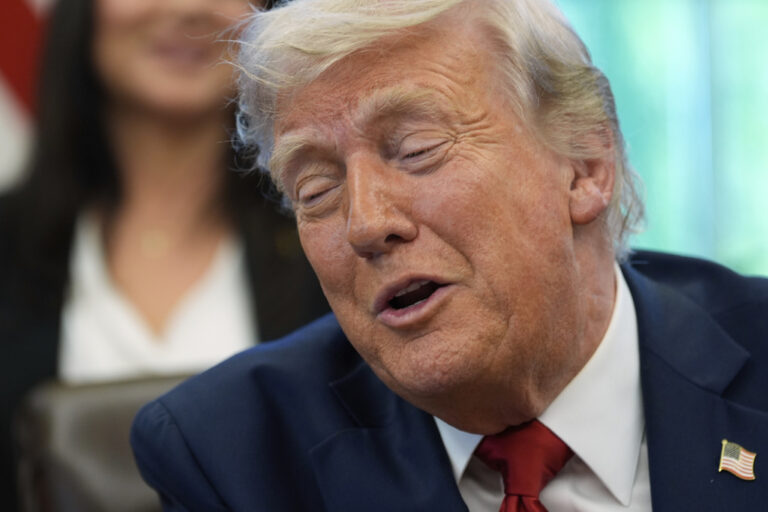Diving into the world of crypto exchange platforms has been one of the most exhilarating experiences in my financial journey. These platforms have revolutionised how we trade and invest, offering a seamless bridge between traditional currencies and the dynamic realm of cryptocurrencies. With just a few clicks, I can explore a plethora of digital assets, making informed decisions that align with my financial goals.
What excites me the most is the sheer accessibility and innovation these platforms bring to the table. Whether I’m a seasoned trader or just starting, there’s always something new to learn and explore. The user-friendly interfaces, robust security measures, and diverse trading options are just a few reasons why crypto exchanges have become indispensable tools in my investment toolkit. As I delve deeper, I can’t help but feel optimistic about the endless possibilities these platforms present for the future of finance.
Key Takeaways
-
Revolutionising Finance: Crypto exchange platforms have transformed trading by offering a seamless interface between traditional currencies and cryptocurrencies, making investment accessible and innovative.
-
Understanding Types: Knowing the differences between centralised, decentralised, and hybrid exchange platforms is crucial for navigating the crypto world and leveraging their unique advantages.
-
Security and Interface: Robust security measures and user-friendly interfaces are key features of crypto exchanges, ensuring both protection and ease of access for users.
-
Trading Flexibility: The breadth of trading options and pairs across platforms allows for diverse investment strategies, catering to both novice and experienced traders.
-
Choosing Wisely: When selecting a platform, prioritise aspects like security, compliance, fees, and available trading tools for a successful and sustainable trading experience.
Understanding Crypto Exchange Platforms
Crypto exchange platforms have revolutionised the way I trade and invest. They offer an accessible gateway to the world of digital finance. Their user-friendly interfaces and robust security features ensure a seamless trading experience.
What Are Crypto Exchange Platforms?
Crypto exchange platforms are my go-to for trading digital assets. They facilitate the buying and selling of cryptocurrencies, NFTs, and even fiat currencies. Centralised exchanges like Binance, Coinbase, Kraken, and KuCoin play a vital role. They act as intermediaries, ensuring safe transactions through Know-Your-Customer (KYC) checks. On the other hand, decentralised exchanges facilitate peer-to-peer trades. No third party is involved, creating a direct transaction environment. This distinction between CEXs and DEXs is fundamental to understanding their operations.
The Importance of Crypto Exchange Platforms
These platforms bridge the gap between traditional finance and digital currencies. They offer the liquidity and variety I need for my crypto portfolio. Liquidity enables quick transactions, which is crucial in a fast-moving market. They also open doors to new opportunities through diverse asset listings. This variety allows me to explore different investment strategies. Their importance lies in the transformative potential they hold in reshaping financial landscapes. Crypto exchange platforms empower me to trade confidently and seamlessly in this evolving finance world.
Types of Crypto Exchange Platforms
Navigating the world of crypto trading involves understanding different exchange platforms. They can be centralised, decentralised, or hybrid, each offering unique advantages.
Centralised Crypto Exchange Platforms
Centralised exchanges (CEXs) like Binance act as intermediaries. They handle buyer and seller trades efficiently. I appreciate their user-friendly interfaces. They offer the ability to trade cryptocurrencies with fiat currencies. These platforms demand user verification for security. Order book systems match buy-sell orders for fair pricing. They also charge transaction fees, which are generally reasonable considering the services provided.
Decentralised Crypto Exchange Platforms
Decentralised exchanges (DEXs) don’t use intermediaries. They give me direct access to trading, increasing control. I find them less restrictive without verification requirements. Transactions occur through smart contracts, ensuring transparency. No central authority enhances security. I enjoy the increased privacy they offer. One drawback is less fiat currency support, limiting options. However, they provide a sense of anonymity and freedom many users seek.
Hybrid Crypto Exchange Platforms
Hybrid exchanges combine centralised and decentralised features. They strive to offer the best of both worlds. I benefit from the security of centralised oversight. At the same time, I enjoy decentralised transparency. These platforms often reduce transaction fees, balancing cost and service. They allow crypto and fiat trading, expanding trading possibilities. Though not as widespread as CEXs or DEXs, they represent an innovative trading solution. I see them as a promising evolution in crypto trading.
Key Features of Crypto Exchange Platforms
Exploring the features of crypto exchanges is fascinating. They play a key role in digital finance. Here are some necessary aspects to consider.
Security Measures
Security is a major focus for both centralised and decentralised exchanges. Centralised ones use strong defences like two-factor authentication and encryption. They keep funds in cold storage, though online wallets are vulnerable. I appreciate how decentralised exchanges give users control, storing no funds or data on the system. This reduces hacking risk, but losing keys or passwords made me understand the responsibility involved.
User Interface and Experience
A crypto exchange’s interface should be intuitive. I found that platforms with clear navigation and real-time updates enhanced my trading experience. Centralised exchanges often have polished interfaces that suit beginners and experts alike. Decentralised exchanges can be complex, providing greater control over trading specifics. The design and usability of a platform significantly influence user satisfaction.
Trading Options and Pairs
The variety in trading pairs offers great opportunities. I enjoy the flexibility seen in exchanges with numerous crypto-fiat pairs. Centralised platforms usually provide a broader selection, which is great when exploring new investment possibilities. Decentralised ones might have limited pairs, but they focus on popular cryptos. Each platform brings distinct opportunities for experienced and novice traders alike.
Evaluating Popular Crypto Exchange Platforms
I’ve used many crypto exchange platforms, and each offers something unique. Coinbase, Binance, and Kraken are among the most popular, and I’ve found insights into their strengths and features worth sharing.
Coinbase
Coinbase shines in user experience. I appreciate its clean interface that’s perfect for newcomers. Creating account, verifying identity, and making first purchase only takes a few minutes. Security features like two-factor authentication reassure me. It’s impressive how Coinbase simplifies complex crypto trades. The platform’s educational resources also helped me understand crypto better.
Binance
Binance offers extensive trading options. I’ve delved into its vast range of cryptocurrency pairs and find it exhilarating. It supports advanced trading features, including futures and options. The platform’s low fees attract me. Binance’s mobile app provides seamless trading on the go. I enjoy the flexibility and convenience it offers, especially with its comprehensive dashboard. Their security measures and frequent updates keep me confident.
Kraken
Kraken stands out for its strong security focus. I feel safe with its multi-factor authentication and cold storage. It allows trading in multiple fiat currencies, which makes it versatile. I’ve used its margin trading, and the feature provides needed leverage. The exchange’s transparent fee structure appeals to me. Kraken’s commitment to compliance and security ensures my trust.
Choosing the Right Crypto Exchange Platform
Navigating the diverse crypto exchange space can be overwhelming. I find focusing on crucial factors makes the process smoother.
Consider Security and Compliance
Security tops my list when picking a crypto exchange. I prioritise platforms like [Crypto.com](http://crypto.com/) for their impeccable security measures, offering peace of mind. They use robust systems like multi-factor authentication and insure user funds. I’ve also noticed typical features include passwordless MFA, adding layers of safety. Exchanges like FTX and Gemini also ensure a safe experience, ranking highly in security. Adhering to compliance regulations is crucial to avoid future pitfalls. Ensuring an exchange follows these standards is non-negotiable for me.
Evaluate Fees and Costs
Fees impact trading profits significantly. I always assess each exchange’s fee structure first. Platforms like Binance offer low fees, appealing to active traders like me. Some offer fee discounts for using their native tokens, reducing costs further. Every exchange lists different trading pairs with varying transaction fees, which I always compare. I also factor in withdrawal fees, which vary across exchanges and can affect my net earnings critically. An exchange’s cost-effectiveness ensures sustainable trading.
Assess Available Tools and Resources
I rely on comprehensive tools to make informed decisions. Platforms with advanced charting tools enable thorough technical analysis. Binance’s mobile app, with its extensive features, provides flexibility I’ve come to value. I’m partial to exchanges offering educational resources, like Coinbase, which assists newcomers effectively. By using these resources, I gain confidence in my trading strategy, knowing I have adequate backup. Such features enhance my overall trading experience, ensuring success in every transaction.
Conclusion
Navigating the world of crypto exchange platforms has been an enlightening journey for me. These platforms have truly revolutionised how we approach trading and investing in digital assets. With their user-friendly interfaces and robust security measures, they make it easier than ever for both beginners and seasoned traders to engage confidently in the crypto market.
The diversity of options available, from centralised to decentralised and hybrid exchanges, offers unique benefits tailored to individual needs. As the landscape continues to evolve, I’m optimistic about the future of these platforms and their role in bridging traditional finance with digital innovation. Whether you’re just starting out or looking to expand your trading strategies, there’s a platform out there to suit your needs and help you thrive in this dynamic financial environment.










